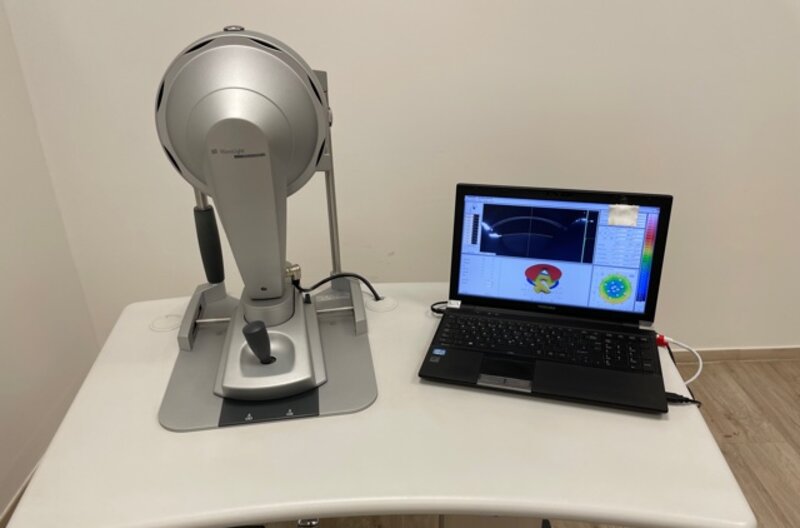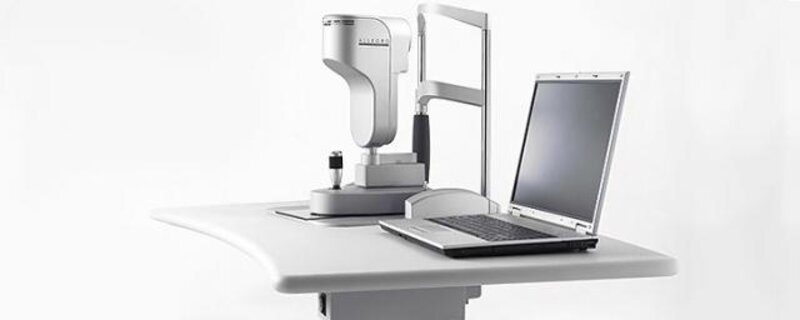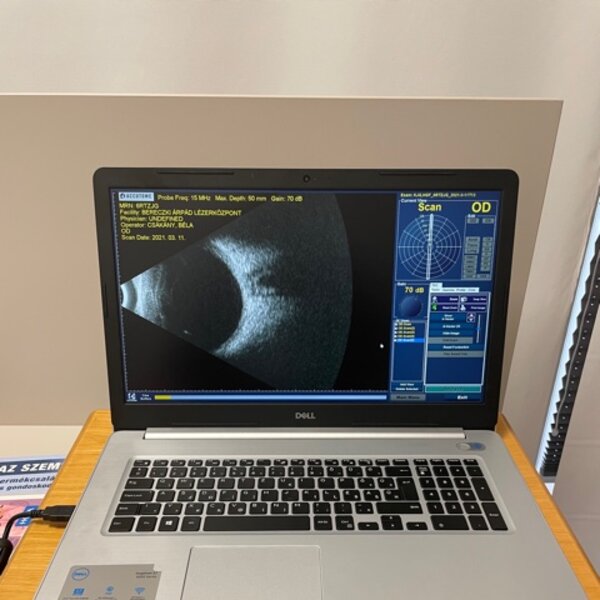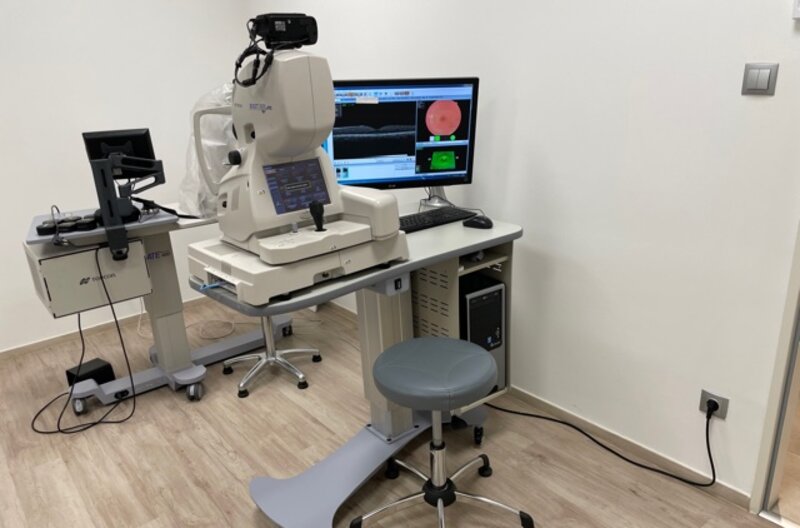Pentacam Oculyser
Copy link
5 test methods condensed into one device. By taking 2,500 images in 250 seconds from 250 points in the eye, it is suitable for and creates a new diagnostic standard:
Corneal topography:
- Diopter is slowly essential for corrective laser surgery, as its data is fed into the laser device during the planning of the laser treatment, making the treatment completely individual.
- It is essential for screening for keratoconus, as it no longer maps not only the anterior but also the posterior surface of the cornea (with traditional corneal topography devices, only the anterior surface can be imaged). It can detect signs of keratoconus at a very early stage.
- It is also suitable for postoperative control of corneal surgery
- Patients who have undergone FemtoLasik / LASIK are also indispensable for lens design of elderly cataracts.
Corneal thickness measurement (Pachymetry)
- It makes a thickness map not only of the center of the cornea, but of it as a whole.
- It plays an important role in the diagnosis of cataracts
- It is essential in the diagnosis and measurement of keratoconus
3-dimensional anterior chamber analysis:
- In cataract diagnostics, an objective measurement of the angle of the atrium is possible
- Suitable for measuring corneal angle before and after lens replacement
Cataract analysis:
- It also makes the intensity of cataracts objectively measurable
- Cataracts can be made visible
- After cataract surgery, valuable data can be obtained from the control
Eyepiece design
Copy link
1. Wavelight Allegro Biograph Biometer - Optical Biometrics - Visual Lens Design
We were the first in the country to use this optical biometer in our private clinic, which uses the infrared light to take measurements in the eye. The device is excellent for designing artificial lenses. The test is completely painless.
2. Alcon Ocuscan - Ultrasound Biometrics
If anatomical changes in your eye (such as very advanced cataracts) do not allow you to get optical data from your eye, you can have an ultrasound scan of your eye with Alcon Ocuscan.
Field of view examination
Copy link
The computer based field of view test is a painless examination lasting 30-35 minutes, during which the visual field of the given eye is mapped by examining the two eyes separately.
Prior to the examination, close vision is corrected and one of the eyes is covered. The patient should then place his head in the mediator and fix the light marker in the center with his free, uncovered eyes. During the examination, highlights of space and time are scattered on the periphery of the machine, which the patient should indicate with a button if he sees it. In addition to the highlights, the machine also tries to interfere with the test with beeps.
After the examination, your doctor will analyze the data obtained by the machine to see if there is a decrease in sensitivity or loss of vision in any of your fields of vision.
The results of the visual field test can indicate a number of diseases: e.g. cataracts, neurological abnormalities, endocrinological diseases.. etc.
Computer based eye examination
Copy link
With the help of a computerized keratorefractometer, the refraction of the whole eye is examined, but the refraction and radius of curvature of the cornea can also be measured separately. With this test tool, we can shed light on whether or not a patient’s eye needs diopter correction.
Ultrasound examination
Copy link
During an ultrasound examination, the internal anatomical formulas of the eye can be examined using high-frequency sound waves. The test is performed in a completely painless, sitting position and the gel-coated test head is placed on the eyelid with the eyes closed.
During the examination we get information about the anatomy of the eyeball formulas or their deviations e.g. eye lens, vitreous, retina, possible foreign body or foreign tissue proliferation, etc..
Optical coherence tomography (OCT)
Copy link
OCT testing is an essential tool in modern diagnostics. During the examination, images with almost microscopic resolution are obtained from the vitreous space, the formulas of the retina and the retina. The test is completely painless, fast, and not at all stressful for the patient.
OCT helps diagnose a number of diseases of the retina:
- Macular / visual site disorders e.g. macular degeneration in the elderly, macular hole, macular edema, epiretinal membrane, lamellar holes, vitreomacular traction, etc.…
- Diagnosis and follow-up of cataracts
- Diabetes monitoring
- Other retinal diseases
Pachymetria
Copy link
We have several tools available in our instrument park to measure corneal thickness. These test devices are most commonly used before and after laser vision correction surgeries, respectively. they help diagnose and follow up with glaucoma.
Biomicroscopy
Copy linkIn the slit-lamp examination, different layers of the eye are examined at different magnifications. The operation of this state-of-the-art device is based in part on a high-intensity, slit-shaped beam of light from a single point and in part on its ability to map the anatomy of the eye at a microscopic level simultaneously with two eyes. The test is completely painless and the illuminated strong beam of light does not cause any damage to the eyes.
Intraocular pressure test
Copy link1. Non-contact Tonometer
The Non-contact tonometer is capable of measuring intraocular pressure using the ‘air injection method’ on the surface of the eye. The advantage is that the device does not touch the patient's eyes during the examination, so the examination is completely painless and no drip anesthesia is required. The disadvantage is that this method of measurement can be inaccurate because it is mainly younger patients who squeeze their eyes, wink or blink at the moment of inhalation, so the test must either be repeated or checked by another means. It is most commonly used to screen for cataracts.
2. Goldmann Applanation Tonometer
The applanation tonometer is also a device for determining intraocular pressure, but here the probe is touched to the anesthetized cornea and the test result is read from its surface using a biomicroscope. The advantage of this method is more accurate, the disadvantage is that drip anesthesia is required to perform it.